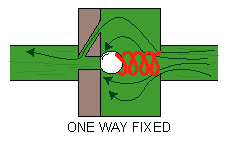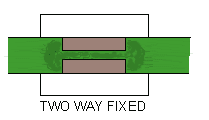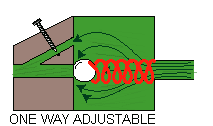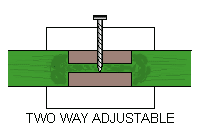 |
|||||
| Home | Research | For Teachers | HISTORY Level 1 Level 2 Level 3 |
PRINCIPLES Level 1 Level 2 Level 3 |
CAREER Level 1 Level 2 Level 3 |
| Gallery | Hot Links | What's New! | |||
| Web Administration and Tools | |||||
 |
|||||
| Home | Research | For Teachers | HISTORY Level 1 Level 2 Level 3 |
PRINCIPLES Level 1 Level 2 Level 3 |
CAREER Level 1 Level 2 Level 3 |
| Gallery | Hot Links | What's New! | |||
| Web Administration and Tools | |||||
![]()
Since the speed of the actuating cylinder is determined by the rate of flow of the hydraulic fluid, we may need a device to control the rate of flow. This device is called a flow restrictor. Since none of the selector valves meter the flow, we must use the restrictor.
There are four types of restrictors:
The One Way Fixed Restrictor is not used all the time, but, it is being used more than the other types of restrictors. It is a check valve type restrictor with a drilled hole through the seat to the other side of the check valve. When the flow pressure seats the check valve ball (i.e., flow moving from right to left), some of the fluid can still reach the other side through the drilled hole in the seat. However, since the hole size is fixed, the amount of fluid passing through the passage to the other side is also fixed.

The Two Way Fixed Restrictor is not used because it restricts the flow on the side of the restrictor where we want the flow to occur normally. Because the passage size is fixed, the amount of fluid moving from right to left, or vice versa, is fixed, as well.

The One Way Adjustable Restrictor is being used nowadays. It is the same as the One Way Fixed Restrictor but the amount of fluid passed through the drilled opening in the seat is regulated by means of an adjustment screw.

The Two Way Adjustable Restrictor is the same as the Two Way Fixed Restrictor, but it also has an adjustable screw that can be used to further restrict the amount of hydraulic fluid passing through the opening.

Send all comments to ![]() aeromaster@eng.fiu.edu
aeromaster@eng.fiu.edu
© 1995-98 ALLSTAR Network. All rights reserved worldwide.
Updated: February 17, 1999